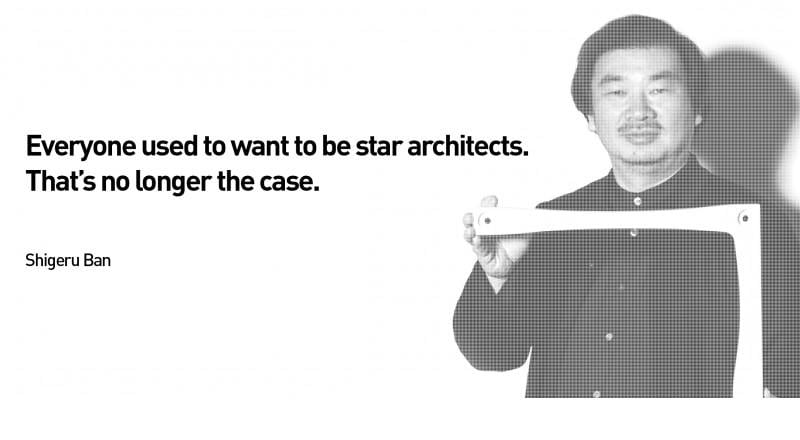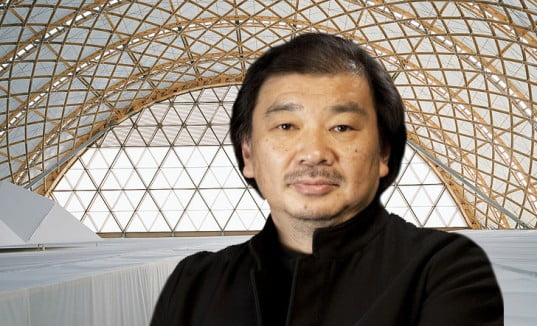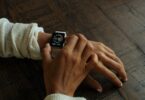Architect Shigeru Ban: Unknown but Interesting facts about Pritzker Prize winner Architect Shigeru Ban is about bellow listed facts in now a days. And i really impressed and think to share with you. So, i would like to give a some Unknown but Interesting facts about Pritzker Prize winner Architect Shigeru Ban.
But did you know he almost went to university to play rugby? Or that he constructed his home without pulling down a single tree? These and many more fun facts on the 38th Pritzker laureate, after the break.
- You may also like Floating School of Makoko Nigeria.
Interesting facts About Pritzker Prize Winner Architect Shigeru Ban
- Architect Shigeru Ban has won this 2014’s Pritzker Prize.

- In all parts of his practice, Architect Shigeru Ban finds a wide variety of design solutions. Often based around structure, materials, view, natural ventilation and light, and a drive to make comfortable places for the people who use them. From private residences and corporate headquarters, to museums, concert halls and other civic buildings. Architect Shigeru Ban is known for the originality, economy, and ingeniousness of his works, which do not rely on today’s common high-tech solutions.
- He thinks the most useful product ever invented is the pencil.
- After Architect Shigeru Ban saw photographs of the plastic sheets given to shelter refugees in Rwanda in 1994, he approached the United Nations High Commissioner for Refugees and proposed his idea for low-cost structures made from paper tubes.
- After winning the career-making competition to design the Pompidou Metz, Ban set up a cabana-sized office — made from paper tubes, naturally — on a balcony on top of the Pompidou in Paris, so he could oversee every detail relating to his design. As he jokes in his Ted Talk: “Free rent for six years!”
- Architect Shigeru Ban worked at Arata Isozaki’s office in Tokyo from 1982 to 1983.

Shigeru ban: bamboo roof
- His father was a businessman at Toyota; his mother was a haute couture designer.
- When Ban was a child, he wanted to be a carpenter when he grew up.
- When Architect Shigeru Ban studied at Cooper Union from 1980 to 1982, he was in excellent company. His classmates were his current partner in the New York office, Dean Maltz. And other notable architects such as Nanako Umemoto (Reiser + Umemoto) and Laurie Hawkinson (Smith-Miller + Hawkinson Architects). His teachers were Ricardo Scofidio, Tod Williams, Diana Agrest, Bernard Tschumi, Peter Eisenman and John Hejduk, among others.
- Ban‘s DIY refugee shelters have proven to be a very popular and effective answer to low-cost disaster relief housing; they have been used in Japan, Turkey, India, China, Haiti, Rwanda and other countries around the world.
Shigeru ban Education:
- In 2007 Ban completed his current home, situated in Tokyo‘s Hangei Forest district, without pulling down a single tree.
- Architect Shigeru Ban, an avid rugby player in his youth. Initially planned to attend Waseda University in order to pursue both rugby and architecture. However, he eventually chose to focus on architecture and attend Tokyo University of the Arts.
- Ban was inspired to attend Cooper Union while at University in Tokyo. When he came across an article on John Hejduk, the “paper architect” and then-dean of Cooper Union’s School of Architecture in New York.
- To build the Japanese pavilion building at Expo 2000 out of entirely recyclable materials, Ban replaced mechanical joinery with fabric tape (which also allowed for manual construction and dismantlement). After the Expo, the structure was recycled and returned to paper pulp.
- Ban has used all of the following materials to construct his designs: Cardboard tubes, paper, shipping containers, packing materials, metal screens, fabric, plastic, acrylic, laminated bamboo, wood (without metal connectors), carbon fiber, curtains, and composites of recycled paper fiber and plastics.
- Since designing the Center Pompadour-Metz and establishing a private practice in Paris with his partner Jean de Gastines, Ban has spent every other week in Tokyo or Paris.
- Architect Shigeru Ban has collaborated with Kenya Hara, art director of Japanese retail company Muji, not once, but twice. First in 2012, when Ban took part in Architecture for Dogs by designing a cardboard-tube structure for Papillons, and then again in 2013. When Ban designed a new Furniture House for House Vision, a three week-long exhibition in Tokyo focusing on the future of the Japanese house.
So, friends this is some little but Unknown but Interesting facts about Pritzker Prize winner Architect Shigeru Ban, hope you enjoy it.






Leave a Comment
You must be logged in to post a comment.